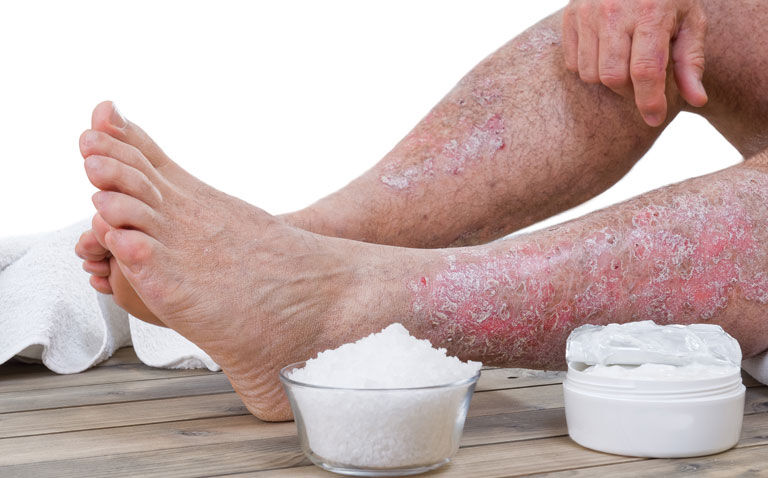Psoriasis patients self-report a greater use of analgesics than the general public largely because of increased joint pain
Psoriasis patients report using more analgesics than members of the general public without the disease and this is largely because of an increased level of joint pain. This was the finding of a study by researchers from the Department of Dermatology and Allergy, Copenhagen University Hospitale-Herlev and Gentofte Hospital, Copenhagen, Denmark.
Psoriasis is best defined as a chronic, immune-mediated inflammatory disease and which varies in prevalence around the world ranging from 30.3 per 100 000 person years to 321.0 per 100 000 person years.
Although psoriasis presents clinically as an inflammatory skin condition, it has become recognised that 1 in 4 patients with psoriasis also have an associated and painful inflammatory joint condition, termed psoriatic arthritis.
While the dry, flaky skin elevated psoriatic plaques are often highly pruritic, over recent years, it has become more apparent that skin pain is a frequently reported and bothersome symptom among people with psoriasis.
Indeed, one retrospective analysis of over 4,500 psoriasis patients clearly showed how patients experience pain, finding that two-thirds were co-prescribed non-steroidal anti-inflammatory drugs, 59.5% other analgesics and 45.9% opioids.
What remains unclear however, is why people with psoriasis take analgesics and so for the present study, the Danish team turned to data contained within the Danish Skin Cohort to assess disease burden and the use of analgesics among psoriasis patients with and without psoriatic arthritis (PsA) and for comparative purposes, included a control group without either condition.
Psoriasis patients and use of analgesics
A total of 3169 patients with psoriasis only and a mean age of 59 years (55.8% female) were included along side, 3490 controls and 847 individuals with both psoriasis and PsA.
The median skin and joint pain in the general population was 0 and 2 respectively. In contrast, moderate-to-severe skin pain was reported by 30% of those with PsA and 21% with psoriasis alone (p < 0.0001). In addition, moderate-to-severe joint pain was reported by 69% of those with PsA and 45% of those with only psoriasis (p < 0.0001).
The use of opioid analgesics in the last 12 months was reported by 9% of the control group, 14.2% of those with psoriasis alone but 22.7% of those with both psoriasis and PsA. Using multivariable regression, the authors calculated that only joint pain was significantly associated with the use of analgesics (odds ratio, OR = 3.72, 95% CI 2.69 – 5.14, p < 0.001).
The authors concluded that physicians should pay increased attention to those with psoriasis who report any joint pain in order to further improve their clinical management.
Citation
Loft N et al. Disease burden, symptoms, and use of analgesics in patients with psoriasis with or without psoriatic arthritis: A cross-sectional study J Am Acad Dermatol 2022










